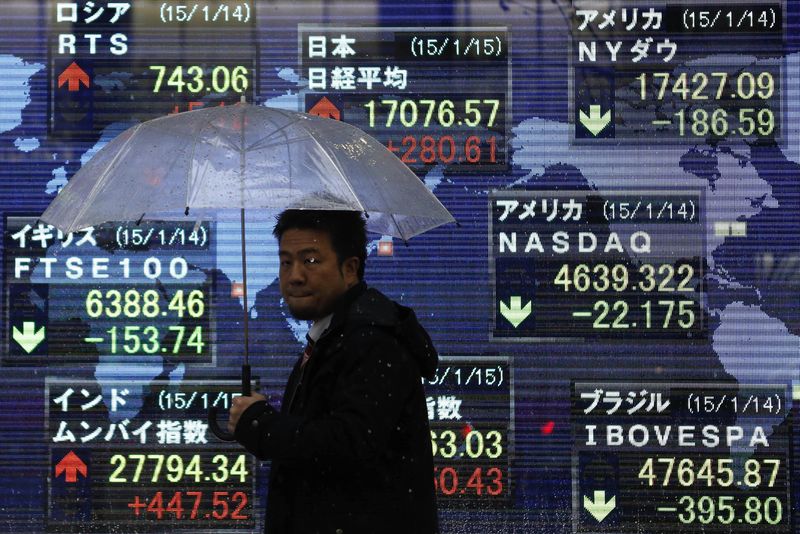Gold prices hit record high above $3,650/oz on rate cut bets, haven appeal
* Fed cut fails to halt slide; S&P 500 drops 2.8%
* Australia down 1.3%, Nikkei flat
* Dollar slides vs Asian currencies
* Asian stock markets: https://tmsnrt.rs/2zpUAr4
By Tom Westbrook
SINGAPORE, March 4 (Reuters) - Asian shares wobbled on
Wednesday and bonds held gains, as an emergency rate cut from
the U.S. Federal Reserve did little to soothe investor fears
over the coronavirus's widening fallout.
The surprise 50 basis point cut came with commentary
highlighting the limits of monetary policy, and Wall Street
indexes fell sharply, gold surged and the dollar sank. .N
The yield on benchmark 10-year U.S. Treasuries, which falls
when prices rise, hit a once unimaginable low of 0.9060%. US/
In Asia, MSCI's broadest index of Asia-Pacific shares
outside Japan .MIAPJ0000PUS edged 0.2% higher, after easing
hopes drove gains on Tuesday.
Australia's S&P/ASX 200 index .AXJO fell 1.2% and Japan's
Nikkei .N225 was either side of flat in choppy trade. .T
E-mini futures for the S&P 500 ESc1 were volatile and last
traded 0.8% firmer.
The U.S. 10-year Treasury yield US10YT=RR drifted below
Wednesday's close to 0.9716% and the dollar pared losses after
touching a five-month low against the safe-haven Japanese yen
JPY= . FRX/
"We do recognise that a rate cut will not reduce the rate of
infection, it won't fix a broken supply chain; we get that," Fed
Chairman Jerome Powell told reporters at a press conference --
sending stocks from 2% gains back into the red. The Dow Jones industrial average .DJI , Nasdaq composite
.IXIC and S&P 500 .SPX each closed down close to 3%.
"Powell's comments have delivered a reality check for
markets, but also highlight the need for fiscal side to do
more," said National Australia Bank FX strategist Rodrigo
Catril.
"As the Fed Chair noted, the Fed does not have all the
answers."
More than 3,000 people have been killed by the coronavirus,
about 3.4% of those infected - far above seasonal flu's fatality
rate of under 1%.
It continues to spread quickly beyond the outbreak's
epicentre in China, with Italy overnight reporting a jump in
deaths to 79. Estimates of the economic cost are rising, too, since the
pathogen and the lockdowns applied to try and stop it spreading
have paralysed supply chains and all but frozen global travel.
S&P Global Ratings cut its U.S. growth forecast for a second
time on Tuesday and the Organisation for Economic Cooperation
and Development has warned the world is headed for its worst
downturn since the financial crisis more than a decade ago.
"The question here is whether a conventional interest rate
response is sufficient, or whether it requires also a fiscal
response," said Sameer Goel, chief strategist, Asia macro, at
Deutsche Bank in Singapore.
"It's not an economic shock, it's a shock driven by a
non-economic factor. It's still not clear how big the problem
ultimately is, or could be, and until you know that, it's hard
to know how much medicine to apply to it."
In currencies, the U.S. dollar fell across the board,
sending it to an eight-week low against a basket of currencies
=USD , while pushing the euro EUR= to an eight-week peak.
In Asian morning trade, the yen hit its highest against the
greenback since October, at 106.84 per dollar, before paring
gains to trade flat. The Australian dollar AUD=D3 advanced to
$0.6603.
Oil prices steadied, with Brent settling at $51.86 per
barrel LCOc1 and U.S. crude 0.4% firmer at $47.37 a barrel
CLc1 . Gold rose 0.4% to $1645.25 an ounce XAU= .
(Editing by Sam Holmes)
